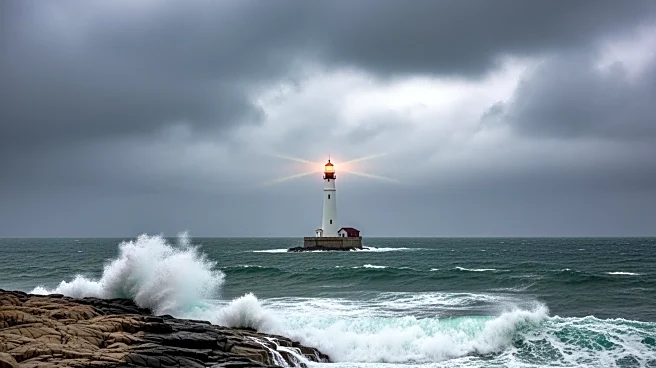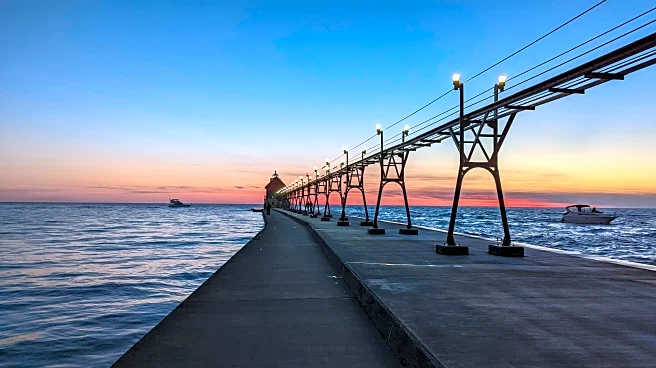What's Happening?
Gordon Lightfoot's song 'The Wreck of the Edmund Fitzgerald' became a major hit in 1976, commemorating the tragic sinking of the freighter Edmund Fitzgerald in Lake Superior. The song, which reached number two on the Billboard Hot 100, was inspired by
the disaster that occurred less than a year prior. Lightfoot, a Canadian musician and experienced Great Lakes sailor, was initially hesitant to write the song due to concerns about exploiting the tragedy. However, his ballad resonated deeply with the families of the sailors who perished, and he became close to them, attending reunions and establishing a scholarship fund at the Great Lakes Maritime Academy. The song's success helped elevate the ship's place in popular history, despite the commonality of shipwrecks in the Great Lakes during that era.
Why It's Important?
The impact of Lightfoot's song extends beyond its musical success, as it contributed to changes in maritime safety standards. The tragedy of the Edmund Fitzgerald highlighted the dangers faced by ships on the Great Lakes, particularly during harsh winter storms. The song's popularity brought attention to these risks, leading to improved safety measures that have prevented major commercial shipwrecks in the region for the past 50 years. This development has significant implications for maritime trade and the safety of those who work on the Great Lakes, ensuring that such disasters are less likely to occur in the future.
What's Next?
The legacy of the Edmund Fitzgerald and Lightfoot's song continues to be commemorated by the families of the sailors and the maritime community. The scholarship fund established by Lightfoot supports cadets at the Great Lakes Maritime Academy, fostering the next generation of maritime professionals. As safety standards continue to evolve, the lessons learned from the Edmund Fitzgerald disaster remain relevant, serving as a reminder of the importance of vigilance and preparedness in maritime operations.
Beyond the Headlines
The cultural impact of Lightfoot's ballad highlights the power of music to preserve history and influence public perception. The song not only memorializes the sailors who lost their lives but also serves as a cultural artifact that connects listeners to the maritime heritage of the Great Lakes. This underscores the role of artists in shaping historical narratives and fostering collective memory.














